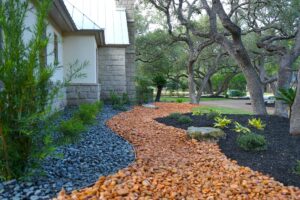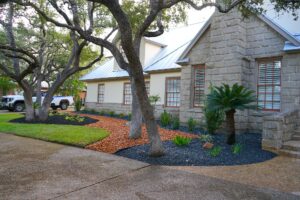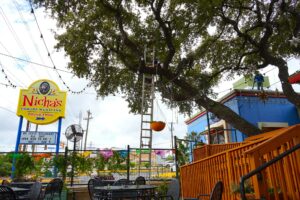It’s heartbreaking to have an attractive young tree in your landscape begin to decline. When you examine the trunk, you may see bark at the base peeling off, splitting or generally looking unhealthy, which usually means one thing—the tree has been planted too deeply.
Symptoms of a trees planted too deep
Signs of trees suffering as a result of deep planting include:
- Girdling or fewer roots
- Yellowing of color
- Undersized or fewer leaves
- Stunted height
You may be able to remedy buried trees by replanting them at the proper height or removing excess soil from the tree’s root flare. Replanting is more successful on trees planted in the past two to three months. However, removal of excess soil via a process called root crown excavation that uses compressed air to prevent injury is better for established plants.
How deep should trees be planted?
The biggest mistake when planting a tree is a digging hole which is both too deep and too narrow. Planting it too deep and the roots don’t have access to sufficient oxygen to ensure proper growth and strength. However, if the hole is too narrow the root structure can’t expand sufficiently to nourish and properly anchor the tree. A general rule of thumb is that a tree should be not planted deeper than the soil in which it was originally grown in. The width of the hole should be at least three times the diameter of the spread of the roots, thus providing it with enough worked earth for its root structure to establish itself.
One thing to note that if you have purchased a tree grown in a container, the roots are already growing at the proper soil depth for the conditions. If you plant the tree at a deeper depth it will affect how the roots will grow from that point. Even an inch too deep on small, bare-root stock trees is significant.
Moral of the story
While planting a tree can seem like a relatively quick and straightforward process, how you do it can have a lifelong effect. By paying attention to the details in the planting process you’ll be more likely to guarantee a healthier, more vigorous tree that could add multiple benefits to your landscape. The mistake of planting a tree too deeply isn’t always readily apparent at the time of installation, but the long-term effects of it are substantial.
Have a question or need help fixing a tree? Call a certified arborist today!






